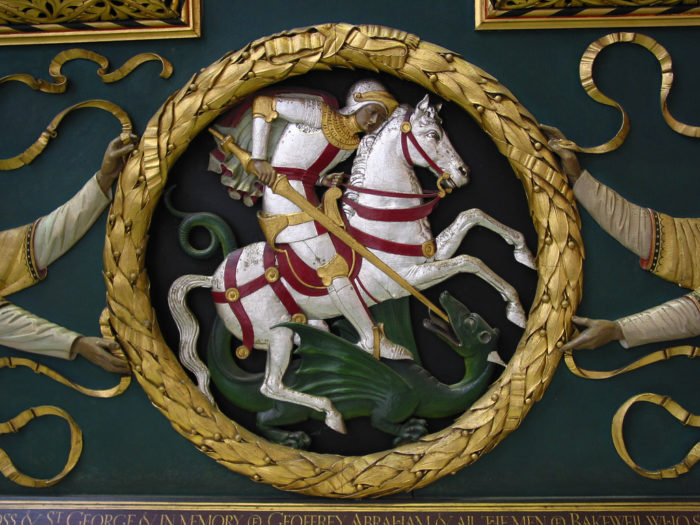23rd April 2017 Holy See
St George’s Day: 23 April

How did St George become the Patron Saint of England? He never visited the country, and his most famous exploit is a myth. Yet, despite that St George has become of the more popular saints, and is patron of Portugal, Malta and Georgia as well as England.
Not much definite is known about St George. According to legend, he was a Roman soldier of Greek descent, born possibly in Cappadocia (now modern Turkey) or in Lydda (now Lod, Israel). He joined the army at a young age, probably following the footsteps of his father. In AD303, the Emperor Diocletian launched a campaign against Christian soldiers in the Roman army, insisting that all Christian soldiers should be arrested, and every other soldier offer a sacrifice to the Roman gods. George refused to do so, and approached Diocletian to try to persuade him to change his mind. Diocletian, according to the story, was loath to lose one of his best tribunes (and possibly the son of one of his old comrades), and tried to persuade George to change his mind, offering land and money if he would convert. But George continued to publicly proclaim his faith. Eventually, tiring of George’s refusal, Diocletian ordered his execution. After a long period of torture, George was executed in Nicodemia on 23 April 303.
His alleged heroism and fortitude gained admirers. Churches to St George began to spring up, spreading from the first church in Lydda into Byzantium. By the fifth century his fame had reached the Western Roman Empire, and he was canonised by Pope Gelasius I in 494. In England, he was mentioned by the Venerable Bede, listed among the martyrs. A church to St George is mentioned in the will of Alfred the Great (died 899). The Synod of Oxford in 1222 declared St George’s Day a feast day in England. But it was King Edward III who named him the patron saint of England when he formed the Order of the Garter (the oldest English order of chivalry) in around 1350.
And what about the dragon? Ah, sad to say there is no evidence of St George ever hastening that fabulous beast towards extinction. In medieval iconography, the dragon often represented the Devil, or was taken in various countries to show St George defending their land against invaders. In English legend, St George slew a dragon on Dragon Hill in Uffington, Berkshire, and it is said that no grass grows where the dragon’s blood trickled down!
St George’s Day is celebrated widely: the Eastern Orthodox Church, the Egyptian Coptic Church, the Indian Syro-Malabar Church all venerate him. Even under the English Reformation, St George’s Day was one of the few saints days which remained in the calendar as a feast day. And today it has a special resonance in the Holy See – it is the name day for Pope Francis, Jorge Bergoglio!

Nice last sentence !
wow! what a history, it is good to know the source of the story I liked this story about St. George.